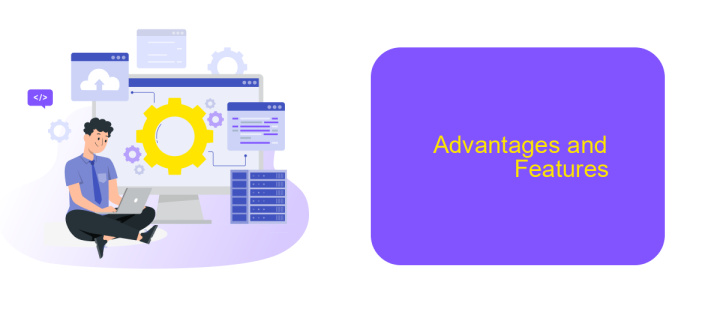MuleSoft Vs Camel
When it comes to integrating diverse systems and applications, businesses often face the choice between MuleSoft and Apache Camel. Both are powerful tools in the realm of enterprise integration, but they offer distinct features and capabilities. This article delves into a comparative analysis of MuleSoft and Camel, helping you determine which solution best fits your organization's integration needs.
Introduction
In the ever-evolving landscape of integration platforms, MuleSoft and Apache Camel have emerged as two prominent contenders. These platforms offer robust solutions for connecting diverse systems, applications, and data sources, making them essential tools for businesses aiming to streamline their operations and enhance efficiency. Understanding the unique features and capabilities of each platform is crucial for making an informed decision that aligns with your organization's integration needs.
- MuleSoft: Known for its comprehensive Anypoint Platform, MuleSoft provides a unified solution for API management, design, and deployment.
- Apache Camel: An open-source integration framework, Camel excels in routing and mediation rules, supporting a wide array of protocols and data formats.
- ApiX-Drive: A versatile service that simplifies the integration process, enabling users to connect various applications and automate workflows without extensive coding knowledge.
Choosing between MuleSoft and Camel depends on various factors, including the complexity of your integration requirements, budget constraints, and the level of technical expertise available within your team. While MuleSoft offers a more comprehensive, enterprise-grade solution, Apache Camel provides flexibility and cost-effectiveness for organizations with specific integration needs. Additionally, services like ApiX-Drive can complement these platforms by offering user-friendly tools to facilitate seamless integrations.
Capabilities Comparison

MuleSoft and Apache Camel are both powerful integration platforms, but they cater to different needs and use cases. MuleSoft stands out with its user-friendly interface and extensive pre-built connectors, making it ideal for businesses looking for rapid deployment and ease of use. It offers a robust API management platform, Anypoint Platform, which simplifies the creation, management, and monitoring of APIs. Additionally, MuleSoft provides comprehensive support and documentation, ensuring that even less experienced developers can efficiently utilize its capabilities.
On the other hand, Apache Camel excels in flexibility and customization. It is a lightweight integration framework that allows developers to define complex routing and mediation rules using a variety of domain-specific languages (DSLs). Camel is highly modular, making it suitable for projects that require fine-grained control over integration processes. While it lacks the out-of-the-box connectors that MuleSoft offers, its open-source nature and extensive community support make it a preferred choice for developers comfortable with coding and looking for a highly customizable solution. For those seeking an additional layer of integration management, services like ApiX-Drive can complement Camel by providing automated data transfer and synchronization capabilities between various applications and systems.
Integration Use Cases

When evaluating integration solutions like MuleSoft and Apache Camel, it's essential to consider the specific use cases they address. Both platforms excel in different scenarios, making them suitable for various business needs.
- Data Transformation: MuleSoft offers robust data transformation capabilities, enabling seamless conversion between different data formats. Apache Camel also supports this but requires more manual configuration.
- API Integration: MuleSoft's API management features are highly advanced, allowing for easy API creation, deployment, and management. Camel can handle APIs but lacks the comprehensive tools found in MuleSoft.
- Cloud Integration: MuleSoft excels in integrating with cloud services like AWS, Azure, and Google Cloud. Camel can also integrate with cloud platforms but may require additional components and configurations.
- Real-time Data Processing: Both MuleSoft and Camel support real-time data processing, but MuleSoft's built-in connectors and pre-built templates simplify the process.
For businesses looking for an easy-to-use integration platform, services like ApiX-Drive can be beneficial. ApiX-Drive offers intuitive tools for setting up integrations, making it a valuable addition to both MuleSoft and Camel users.
Advantages and Features

MuleSoft and Camel are both powerful integration platforms, each with its unique advantages and features. MuleSoft is known for its user-friendly interface and extensive out-of-the-box connectors, making it easier for businesses to integrate various systems quickly. Camel, on the other hand, is highly flexible and offers a lightweight solution that can be embedded directly into applications.
One of the key strengths of MuleSoft is its robust API management capabilities, which allow developers to create, manage, and secure APIs efficiently. Camel excels in its support for multiple protocols and data formats, providing a versatile framework for complex integration scenarios.
- MuleSoft offers a wide range of pre-built connectors for various applications and services.
- Camel provides extensive support for Enterprise Integration Patterns (EIPs).
- MuleSoft features a visual design environment that simplifies the integration process.
- Camel is highly customizable and can be integrated seamlessly into Java applications.
For businesses looking to streamline their integration processes, services like ApiX-Drive can be invaluable. ApiX-Drive offers an intuitive platform for setting up integrations without extensive coding, making it a great complement to both MuleSoft and Camel. This allows organizations to leverage the strengths of these platforms while simplifying the overall integration workflow.
Conclusion
In conclusion, both MuleSoft and Camel offer robust solutions for integration needs, each with its unique strengths and capabilities. MuleSoft provides a comprehensive platform with a user-friendly interface and extensive support, making it ideal for enterprises seeking a scalable and easily manageable integration solution. On the other hand, Camel offers flexibility and control, appealing to developers who prefer a code-centric approach and need to tailor integrations to specific requirements.
Choosing between MuleSoft and Camel ultimately depends on the specific needs and resources of your organization. For those looking for an alternative or complementary tool, ApiX-Drive presents a valuable option. ApiX-Drive simplifies the process of setting up integrations with its intuitive interface and wide range of supported applications, making it accessible for businesses of all sizes. By carefully evaluating your integration requirements and considering tools like ApiX-Drive, you can ensure a seamless and efficient integration strategy that aligns with your business goals.
FAQ
What are the primary differences between MuleSoft and Apache Camel?
Which platform is better for small to medium-sized businesses?
Can MuleSoft and Apache Camel be used together?
How do these platforms handle API management?
What support options are available for MuleSoft and Apache Camel?
Apix-Drive is a universal tool that will quickly streamline any workflow, freeing you from routine and possible financial losses. Try ApiX-Drive in action and see how useful it is for you personally. In the meantime, when you are setting up connections between systems, think about where you are investing your free time, because now you will have much more of it.

